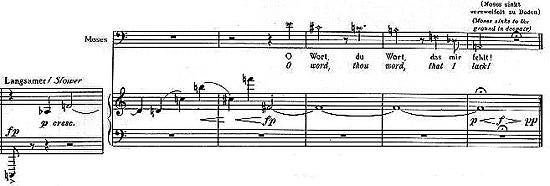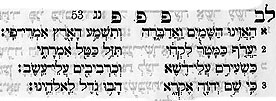EOL 3: Music, Myth, and History (Bohlman) |
|
|
4. Diaspora: Departure from the Mediterranean Modern diasporas from the Mediterranean and the continents it connects are not isolated historical phenomena but rather historically reflect mythological origins. The most powerful myth generating the images and the music of modern Mediterranean diasporas is that of the exodus of the Jews from Egypt and the sacred journey to the Promised Land of Israel. The myth of modernity is embedded, then, in the five books at the beginning of the Bible, the Pentateuch or the Torah, the "five books of Moses." The five books of Moses constitute not only an epic, but they provide a context for the musical transmission of that epic, both through the narrative forms of epic and ballad that structure the different parts of the Torah but also in the centuries of oral and musical performance of the Torah. Myth is connected to modernity by its musical reproduction through the yearly cycles of Torah recitation. The diaspora of Moses and the Jewish people further becomes a myth for modern diaspora because it has no end. Throughout the Torah, but finally in the fifth book, "Deuteronomy," the diaspora literally, that is in the text of the Bible itself, fails to achieve its goal. The journey of Moses and the Jewish people had been long, and the need to fulfill its goal of a promised land was great. The authors of "Deuteronomy" heighten the expectation for arrival in Israel by specifying the exact length of the journey and the period of wandering and law-making in the desert (verse 3): "And it came to pass in the fortieth year, in the eleventh month, on the first day of the month." What happens at this moment of expectation and fatigue is, however, not what we expect. Verse three continues: "Moses spake unto the children of Israel, according unto all that the Lord had given him in commandment to them." After forty years and more, arrival will be postponed again, while Moses reviews the laws that God has created for the people of Israel. At a moment of historical disjuncture, Moses sings. |
Audio 4 160K Modern African-American. Ice Cube: "Drive By" (Hip-Hop/Gangsa Rap) |
The authors of "Deuteronomy" concern themselves with two fundamental questions of diaspora, which the laws in the fifth book of Moses represent: time and place. More than at any other time in the Pentateuch, exact periods of time are specified in "Deuteronomy," and history is worked out in great detail. The forty years in the wilderness are reviewed again and again, with each place of residence and each place of struggle remembered for the symbolic role it plays in history. The epic quality of the journey is also remembered, with references to Moses's age--he is 120 years old in "Deuteronomy"--symbolizing the end of his journey. Moses will never cross the Jordan into the promised land, even though God clarifies the dimensions of that promised land to him with great accuracy. The goal of the sacred journey has never been clearer; arrival has never been more secure and immediate; and yet, "Deuteronomy" does not conclude the books of Moses as we might expect. Its laws, old and new, bring no peace to history. That lack of peace will mean that the journey must continue, assuming a new form, that of diaspora.
|
Graphic 1: score of Final line of from
the 2nd Act of
|
|
Diaspora also symbolically raises the question of music in the historical imagination, of "why music" as a narrative voice of history? "Deuteronomy" ends with music, the "Song of Moses" in the thirty-second chapter, in which Moses narrates the wonder and miracle of God, as well as the horror that history holds. Upon singing the 43 verses of the song that bears his name, Moses dies. We are left to imagine that the people of Israel settle in the land of Israel, but we know from history that the landscapes of the Eastern Mediterranean remained contested -- or actually became contested for the first time. It would not be substantially different on the contested landscapes of modernity that later Mediterranean diasporas would generate. Graphic 2: opening Hebrew text of the "Song of Moses"
|
|

